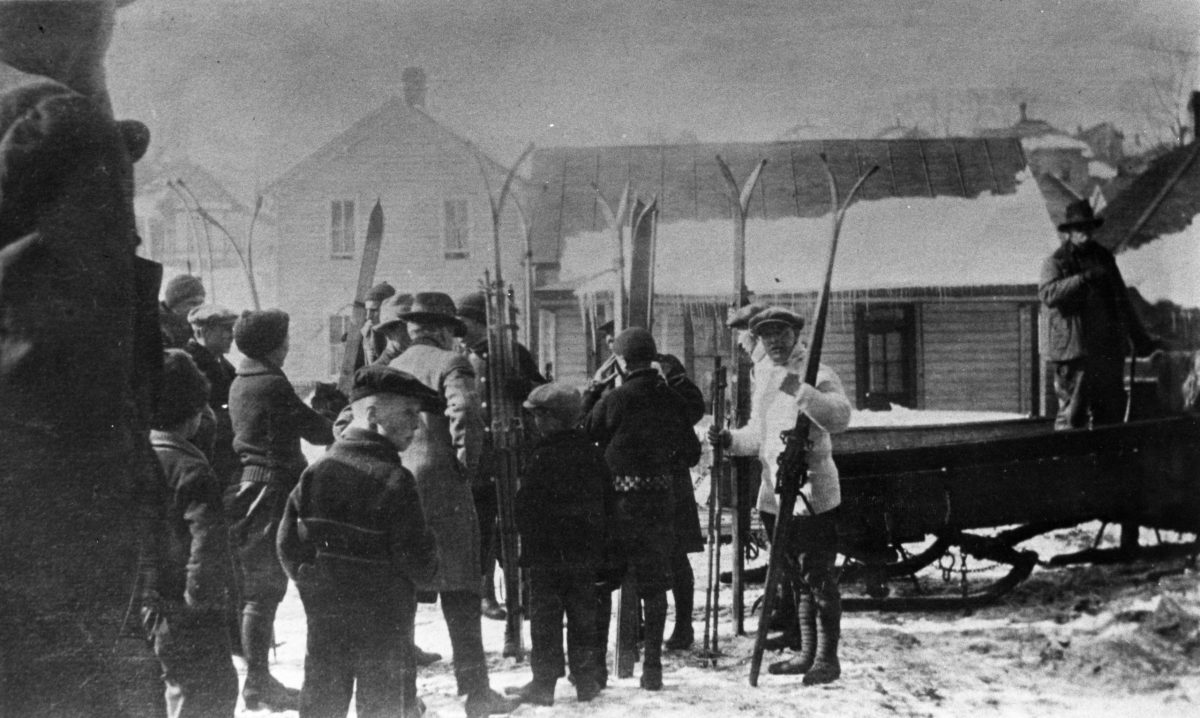The theme this year at the annual Glenwood Cemetery tribute event featuring ghosts on Saturday, Sept. 28, is “Immigrants: People Who Made Park City Home.”
Since many of the families who are buried at the historic cemetery were from other countries originally, this year we decided to honor some of them and their families. At the event, we will be discussing Thomas Brennan, Peter Martin, Frank Andrew, John Dunsmore, Joseph Zucca, Matilda Wiest, and Sara Pike.
But for the sake of this article, let’s talk about some of the other families who were also immigrants and what we know of their stories.
Francis Trythall immigrated here from the Cornish village of Illogan in England. He was born in 1854 and had four brothers and a sister. His father was a tin miner, and Trythall and his brothers started working in the mines at the age of 12. When mining in England slowed down, Trythall and his brothers moved to America to find mining work here. They settled in Pennsylvania, and Trythall moved west and arrived in Park City in 1885.
He married Annie Rosevear and they had three boys together. After working 30 years in the mines, including 15 at the Ontario Mine, Trythall became ill with miner’s consumption and passed away after a couple of years.
Some people, like Ancil Johnson, came here for religious reasons. Johnson’s mother converted to Mormonism and felt it would be better if they lived in the United States, so Johnson immigrated from Sweden when he was just 9 years old. They traveled by cattle boat to America. Then they crossed the plains in an ox team and settled in Salt Lake City.
Since they had no money, Johnson started working at an early age. He drove the ore wagons from Bingham to the smelters and worked a few years later at the Ontario Sawmill.
As time passed, Johnson also worked as a Park City policeman, a boss teamster, a watchman for the Judge Mine, and did some cowpunching (wrangling, herding, and branding cattle). Johnson passed in 1934, at which time he was claimed to be the oldest resident of Park City, both in terms of age and length of residence.
Other people, like Mary Corrigan, came here for new opportunities. She was born in Scotland, but times were tough, so her husband, James, moved to the United States first to find work in 1880. She moved to Pennsylvania eight years later with their seven children. The Corrigan family first lived in Pennsylvania, then moved to Rock Springs, Wyoming, and finally to Park City. Her husband was also a miner who died of miner’s consumption in 1907.
This article’s final subject is Ann Crowther Willcocks. She was born in England and became a widow at the age of 19. She met her future second husband, Walter Willcocks, and they immigrated here together in 1865. They spent some time in Monroe, New York as he worked in the iron mines for about 12 years before they moved to Park City in 1877. He became the master of Park City’s water system, a job he held for over 16 years. She helped with rental properties and hotel they owned.
There were many reasons people emigrated to the United States, and why they came here to live and work in here in Park City.
Tickets for the Glenwood Cemetery Tribute Event with Ghosts scheduled for Saturday, Sept. 28, are on sale now! The tours are scheduled from 10:45 a.m. to noon or 12:45 to 2 p.m. Contact Diane Knispel at the Park City Museum 435-574-9554 to reserve spots. The rain date is Sept. 29. We encourage ages 13 and up to attend. Stories may not be appropriate for younger children.
If you have information about a family member buried in the Glenwood Cemetery, please call Knispel, as she would love to learn more about your family’s history.
Diane Knispel is the Park City Museum director of education.

